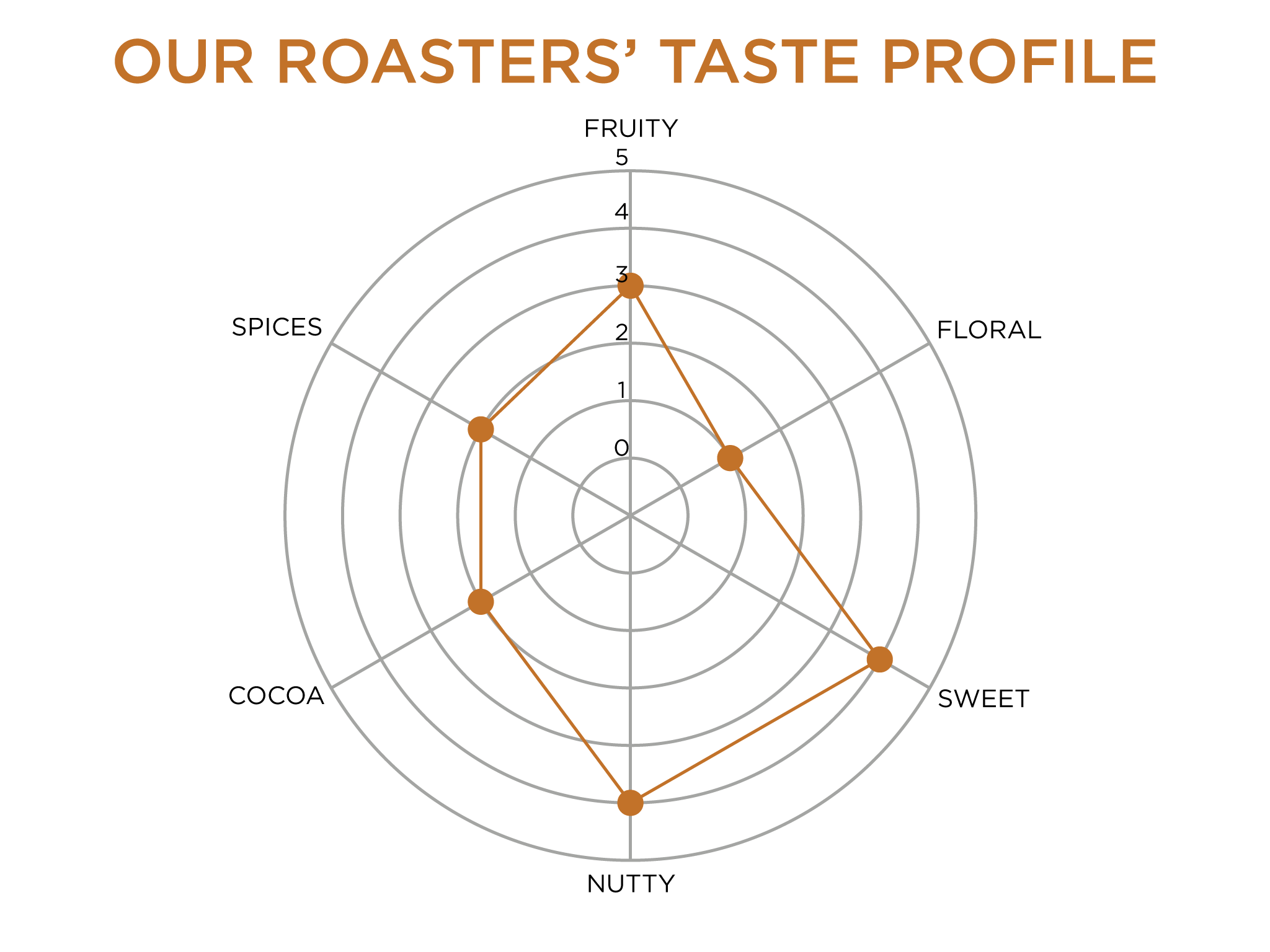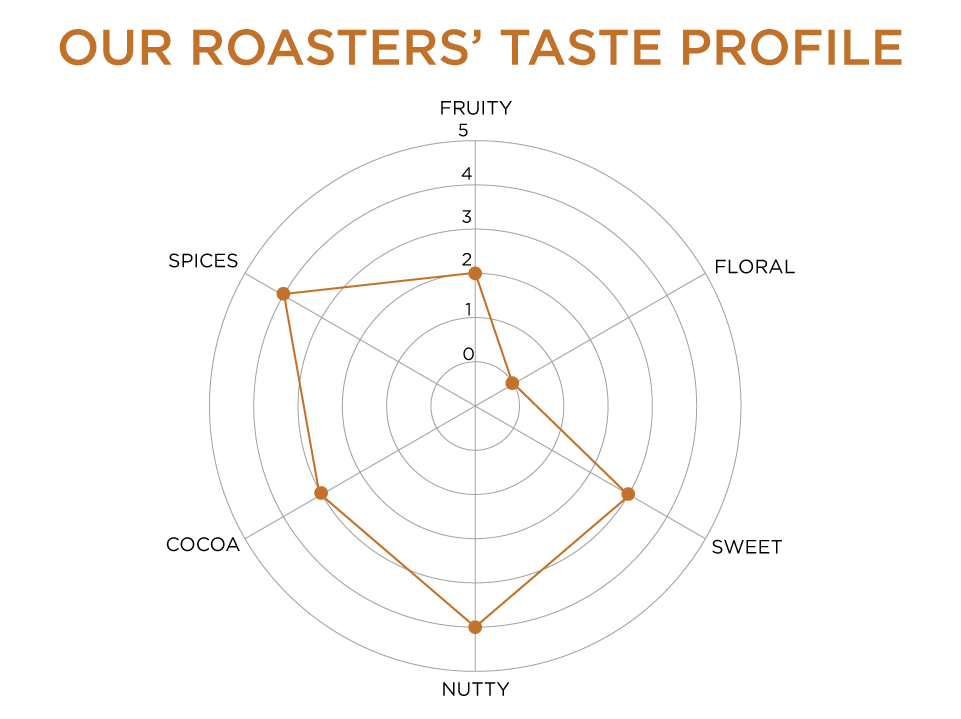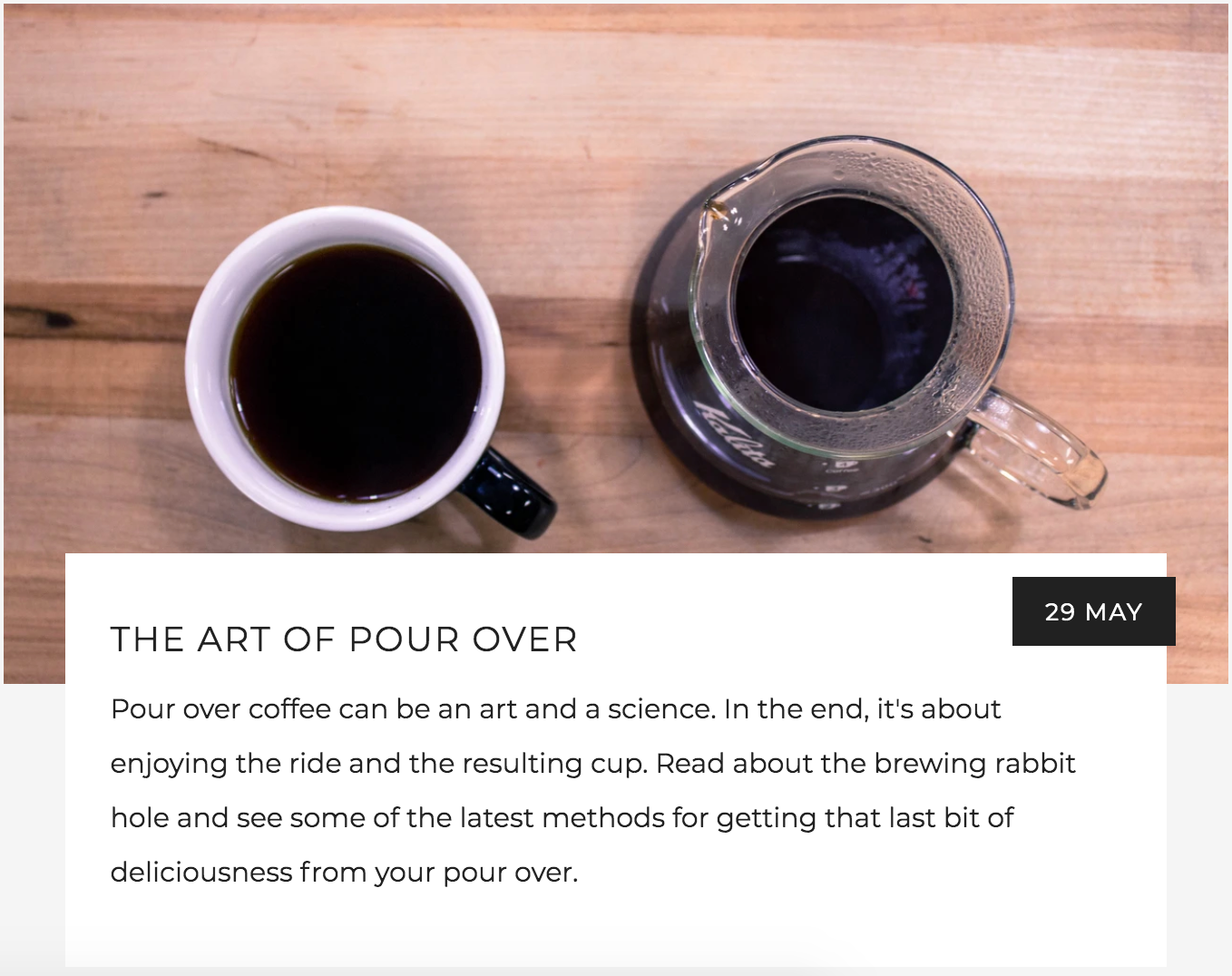So what is this thing anyway?

It’s more than just a funky looking chart.
One of the hardest things to communicate in coffee is taste. We source and sample hundreds to thousands of coffees a year. For blends, it’s a matter of keeping the coffee tasting the same, whether it’s January or June. For single origins, it’s about finding coffees that amaze us and that we can’t wait to share with our guests.
With single origin releases, we assign a group of flavor calls that best describe the dominant tastes of the coffee. But those flavor calls only tell part of the story. Worse, many people new to coffee think they are doing something “wrong” when they can’t get "peach raspberry crumble" out of their coffee like it says on the bag. Or, they might not think they’ll like a coffee with Meyer lemon as a note.
And this is a shame! So, we figured there’s another way.
Here we'll cover:
- Core tastes that make up a coffee flavor profile
- How growing region and processing affects taste
- How to use our spider charts to find a coffee you'll love
 A look at the variety of calls made during a single "flavor call" session at Kaldi's
A look at the variety of calls made during a single "flavor call" session at Kaldi's
“Spider” Charts
In looking for other ways to communicate a coffee’s flavor profile, we went back to basics. When we cup a coffee, we first start with noting a coffee’s aroma, balance, sweetness, and acidity. Then, we’ll start generic with tasting notes. Things like:
- Is this a nutty coffee?
- Are there very apparent floral characteristics?
- Are fruity notes very prominent?
- What’s the level of general sweetness present?
These basics form the backbone of what we lovingly refer to as our "spider" chart. By including this information, you can get a visual understanding of the depth and complexity we’re tasting. We might list “peach” or “papaya” as one of the three or four flavor calls, but a graph can show you that “cocoa” is also very much a player in this particular coffee, even if it wasn’t the “final” or most prominent note we were tasting. Thus, the spider chart gives a more three-dimensional view into the flavor of the coffee.
So how does this help you?
The world of coffee is vast and varied and it can be hard to make a choice on what coffee fits your taste. If you feel like chocolatey coffees are your go-to, you’ll want one of our selections that has anything above a 3 in the cocoa category. Or, if you love fruit-bomb naturally processed coffee, aim for something 3 or above in the fruity category. The same goes for nutty, floral, and sweet coffees.
For more specific examples, let’s take a look at some of our releases from the spring and summer of 2020:

Coffee: Colombia Familia Imbachi
What did this coffee taste like?: This was like a piña colada. It was intensely fruity with delicious tropical notes way out in front. It had ever so slight nuttiness behind that.

Coffee: Colombia Omaira Quintero
What did this coffee taste like?: In contrast to the Familia Imbachi, this Colombian coffee was much nuttier and sweeter. It had a lovely balance between fruity and cocoa, and an understated but tasty pear note. This is a testament to the diversity of coffees that come out of Colombia.

Coffee: Ethiopia Nano Genji Lot 5
What did this coffee taste like?: This coffee was nothing but fruity, floral, and sweet. It was a classic, sparkling Ethiopian coffee that was refreshing and dynamic. But, for fans of chocolatey and nutty coffees, this may not have been in their wheelhouse. Still great to try!

Coffee: FTO Rwanda Sholi
What did this coffee taste like?: This was a really cool coffee. It presented with excellent sweetness, but on the finish it had a spicy taste along with a little nutty coating on the tongue. Fruits were definitely there but sat in harmony with the spicy notes. A lovely, complex coffee.

Coffee: Mexico Sicobi
What did this coffee taste like?: Basically the exact opposite of our Ethiopian coffee, the Mexico Sicobi is a stellar example of a coffee that’s nutty and cocoa-dominant. We consider this a “desert-island” type of coffee, one that is very sessionable and could be served to anyone, while still being of excellent specialty quality. We think of this coffee when we think of the familiar term "smooth".
Explore with Confidence!
Hopefully this provides some more insight and transparency into our coffee sourcing and tasting process. In the end, our main objective is to present the work of the producer as humbly but as passionately as we can. By adding in another way for you to visualize the tastes of a coffee, we hope to showcase another side of our growers’ and processors’ product. We hope these bring you even more confidence to support their exceptional work.
Cheers!
-
READ NEXT
THE ART OF POUR OVER
Related Content
-
Much More Than a Blend: 700 | Kaldi's Coffee Blog
-
Brewing At Home Guide | Kaldi's Coffee Blog
-
Coffee Processing and Your Cup | Kaldi's Coffee Blog




